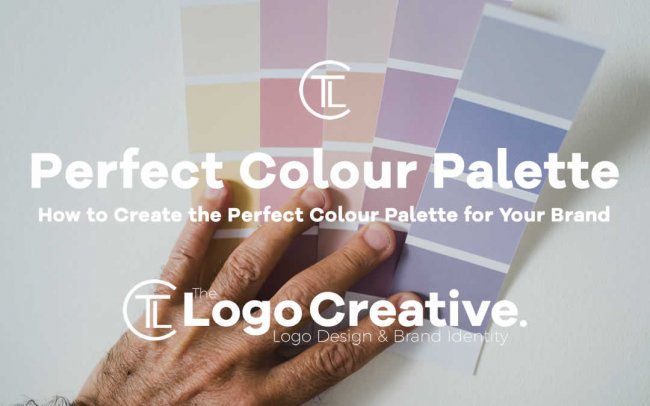Creating a perfect color combination for your brand may seem like a routine job, but it’s actually a challenging and time-consuming task. A color palette has the power to boost brand awareness or chase customers away, so you have to be clever enough to choose the best color scheme.
According to a report, almost 93% of people say the visual dimension is the number one influencing factor affecting the purchase decision. Another survey shows that colors improve brand recognition by up to 80%.
These stats should make you think twice about the visual appearance of your brand, but we are here to help you go through the process more comfortably. Keep reading to learn how to create the perfect color palette for your brand.
Table of Contents
Tips to Get You Started
Before you begin selecting the best colors for your brand, you need to prepare by conducting a little research. First of all, we suggest you think about your business, its goals, visions, and core values. Try to express it in five words to make a general description of the brand style.
For instance, a brand could be active, dynamic, adventurous, informal, and exciting. These five words already give you a good outline for creating a color scheme.
Markus Mackie, a graphic designer at Assignment Holic Service, says another option is to check out Pinterest and look for interesting ideas: “The platform is filled with incredible visuals and you can use it for inspiration. This method is very simple but highly practical.”
You also need to get acquainted with basic concepts like color wheels and hierarchies. A color wheel is a circular diagram that contains all shades and hues, so it makes an excellent starting point. Besides that, color harmonies come in different forms, ranging from complementary and analogous to triadic and rectangle schemes.
However, understanding the meaning of colors is by far the most important thing here. Each hue brings a specific connotation and impacts customers on the subconscious level, which means you can make the brand more appealing if you utilize the right shades. The topic deserves a separate article, but we will briefly explain the meanings of frequently used colors:
- White: It’s a color of cleanness and innocence. Brands use it to express perfection and purity.
- Yellow: One of the strongest colors in the marketing universe, yellow is a symbol of action and energy.
- Red: Brands such as Coca Cola or Red Bull use red because it symbolizes power and passion.
- Green: If you want to promote environmentally friendly ideas, then you might as well choose green to be a primary color.
- Blue: This color evokes the feeling of credibility and professionalism.
- Purple: It’s a symbol of royal, high-level, and exclusive products.
- Black: Black is conservative but powerful. It screams luxury and authority.
Choosing the Color Scheme: Primary, Secondary, and Background Colors
Now you know more than enough to choose the adequate color palette. In general, all brands develop a set of three different colors: primary, secondary, and background. We will discuss each of these units separately:
- Primary colors
Just like the name says, a primary color is the most important component of the brand’s visual identity. As such, it needs to be aligned with the overall brand appearance and reflect the basic values of your business.
This is where you need to think about color connotations. For instance, choosing blue as the primary color is a good option if you are running a professional service agency because it symbolizes professional credibility and authority. It’s a simple example, but it clearly reveals the purpose of the primary color.
- Secondary colors
A primary color dominates the overall brand appearance, but it cannot function alone. On the contrary, it works best when combined with one or two accent colors. Accent colors represent less significant elements that don’t match the importance of primary components.
Using a professional design tool is the easiest way to identify the best accent colors. A platform such as Adobe Colors will give you a number of proposals based on the primary color you use. That way, you don’t have to worry about making the wrong choice since Adobe does the whole work on your behalf.
- Background colors
The last phase of choosing a color palette is finding the right background color. This should be a hue that is both relaxed and neutral. It should not distract customers, but rather help them focus on more important visual elements.
Interesting Color Scheme Ideas
There are literally countless ways to combine colors and create color schemes, but we want to give you at least a few nice ideas to boost your imagination. You can find a lot of different combinations online, but let’s check out our top five color scheme ideas:
- Warm antique: This color scheme perfectly represents evergreen brands with its combination of chocolate and brownish hues.
- Blue waters: If you are running a hi-tech business, you can use the bluish combination with hues such as sky blue, indigo, and sapphire.
- Very Venice: A warmer color palette like Venice is based on gentle tones: soft pink, grapefruit, green, and grey.
- Vintage: Being the combination of pale colors, a vintage palette is ideal for lifestyle brands.
- Marigold mix: Vanilla, mahogany, yellow, and orange make a beautiful scheme called the marigold mix.
Conclusion
A color scheme is a quintessential element of your branding strategy. It has the power to make or break the business, so it’s crucial to find a combination that perfectly represents your brand and its core values.
We made this article to show you how to create an ideal color palette and to give you a few important ideas and suggestions in this field. These tips should help you to get the job done faster and easier, but don’t hesitate to write a comment if you need any other explanations – we will be glad to answer you!
 Author Bio
Author Bio
Lauren Adley is a writer and editor at UK Best Essays. She is dedicated to her family, work and friends. She is keen on reading, playing the guitar and traveling. She is interested in educational, marketing and blogging issues.




